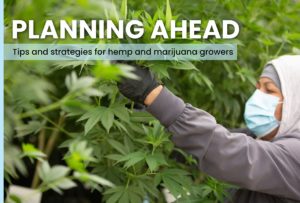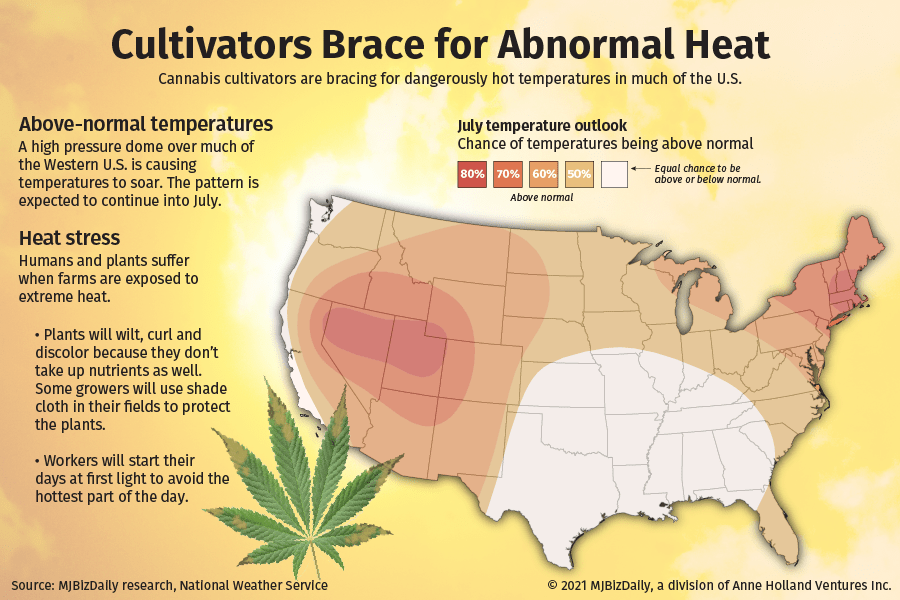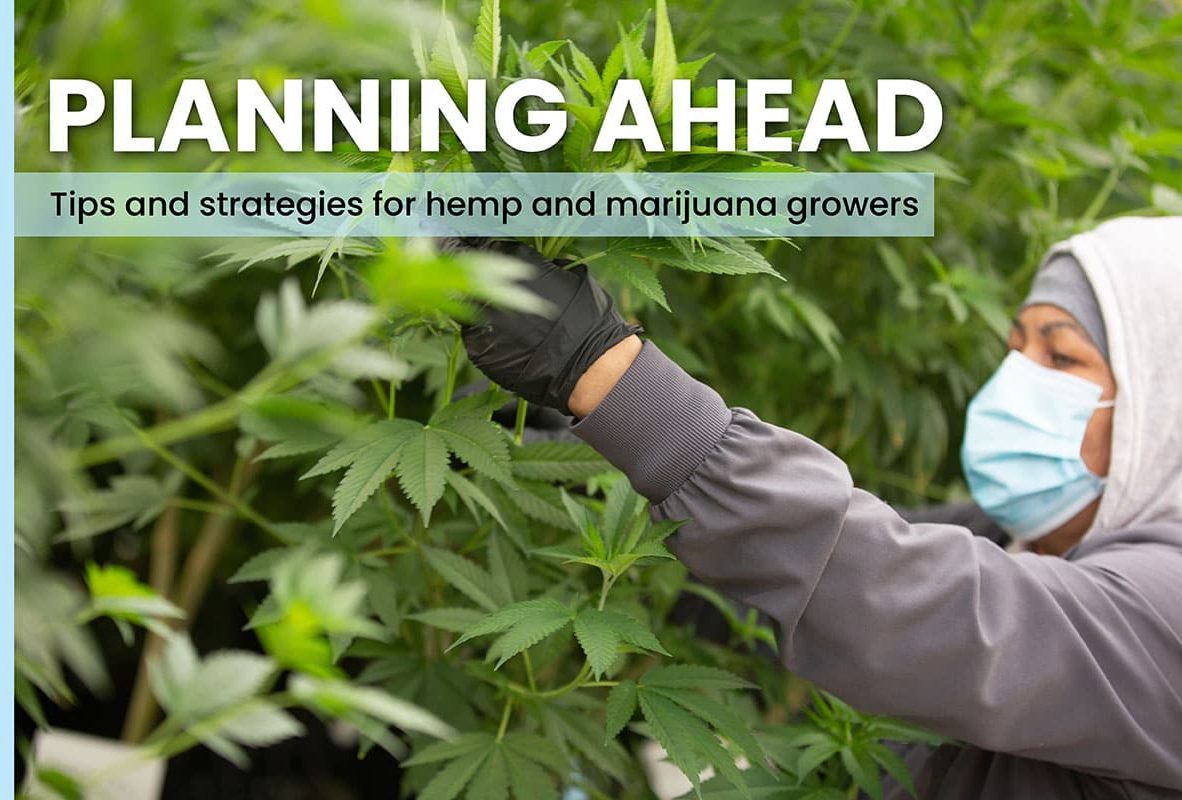 (This is the 12th installment in a series focused on cultivation planning for marijuana and hemp growers. The previous installment is available here.)
(This is the 12th installment in a series focused on cultivation planning for marijuana and hemp growers. The previous installment is available here.)
In unseasonable heat, marijuana and hemp plants can wilt, droop, curl and even stop trichome production.
Overheated plants will also experience slow nutrient uptake and perspire too quickly.
All of that is happening in the marijuana and hemp fields in the Western U.S.
A high-pressure dome has trapped heat over much of the country for weeks, and it’s expected to last into July.
Fortunately, cannabis growers have several tools at their disposal when the mercury hits record highs.
Cultivators looking to beat the heat should consider:
- Using shade cloth in fields to lessen the impact of direct sunlight.
- Tweaking genetics to account for the regional climate.
- Shifting hours for laborers to work during more ideal conditions.
WA preps for heat
Growers in Washington state are bracing for several days in a row of temperatures well above 100 degrees.
“It’s a little early for it to be that hot,” said Scott Berka, owner of Aloha Botanics, a licensed marijuana producer and processor in Okanogan County. Temperatures typically peak in mid-July into August in that area.
To adjust to the heat, Berka’s cultivation crew clocks in at 5 a.m. and finishes around noon. If anything else needs to be done that day, he’ll bring back workers in the evening.
Berka bought a wedding tent that shades water jugs and a commercial ice machine to keep his workers cool and hydrated.
When the temperature spikes, Berka monitors his plants for signs of heat-related shock, including drooping or curling.
In that region, there are many apple orchards that have been in operation for generations, and Berka takes notes on how those farmers deal with the weather. He’s noticed they use shade cloths across their entire fields for certain varieties of apples.
“A lot of tricks to be learned from the orchardists,” Berka said.
He can pull a shade cloth over his hoop houses to cut down on the ultraviolet light. When Berka has done this in the past on warm days, his plants have thrived, he said.
Other concerns include weeds that thrive in hot weather, which can also lead to a breeding ground for harmful insects.
To keep the dust down around his facility, Berka has chip-bark mulch delivered several times a week. Dust clogs the pores on the plants and slows nutrient uptake and photosynthesis.
Galadriel Walser, general manager of Buddy Boy Farm, a licensed marijuana producer and processor in Reardan, Washington, agrees with adjusting her workers’ hours to keep them out of the heat.
She also provides frozen treats and Gatorade to her workers throughout the day during hot weather.
Because Buddy Boy grows in solid-structure greenhouses with HVAC systems, the plants aren’t as affected by the weather.
Walser said that when it gets really hot, workers roll up the blackout tarps on the sides of the greenhouses to increase air circulation.
Breed for the hot days
In the high desert of western Nevada, growers should expect high temperatures starting next week.
But Adrienne Snow, co-founder of Fallon-based Western States Hemp, isn’t concerned because her company has developed genetics to handle the heat.
“In our earliest days of growing, we started to seek out plants that seem to thrive in those high temperatures,” Snow said.
Deserts can reach 10o-plus degrees during the day and then cool down dramatically at night, and finding plants that can withstand that change has been the goal over the past few years.
Western States Hemp tries to get small plants in the ground as soon as the last freeze hits and well before the hot days come. Seedlings shouldn’t be planted in 100-degree temperatures, Snow said.
Her company has had better success with starts from the greenhouse and by cloning from strong mothers with high CBD content.
Late-summer concerns
One major impact these high temperatures have on cannabis is slowing trichome production, said Chris Boucher, CEO of Farmtiva, a hemp seed breeder in Santa Ysabel, California.
Boucher had to stop growing hemp in California’s Imperial Valley in the summer because even at night the temperatures would stay in the 90s and 100s.
“If you’re in a heat zone that doesn’t cool down at night, it’s like a double whammy,” he said.
Boucher cautions against trying to plant anything when the weather is acting this way.
“I’ve seen people transplant clones in 120 weather, and the next day, half of them have died,” he added.
Boucher also recommends using shade cloth to keep plants from getting scorched.
In his region of Southern California, Boucher doesn’t worry as much about early summer heat as the extremely hot days in August, September and October.
Vegetative growth can withstand more heat. But once the plant flowers, the high temperatures can make processing difficult.
Trimming and bucking in 100 degrees in October can lead to lower yields because “it’s so hot, the trichomes stick to everything,” Boucher said. Plus, the automated trimming machines don’t work as well in the heat.
Bart Schaneman can be reached at bart.schaneman@mjbizdaily.com.





